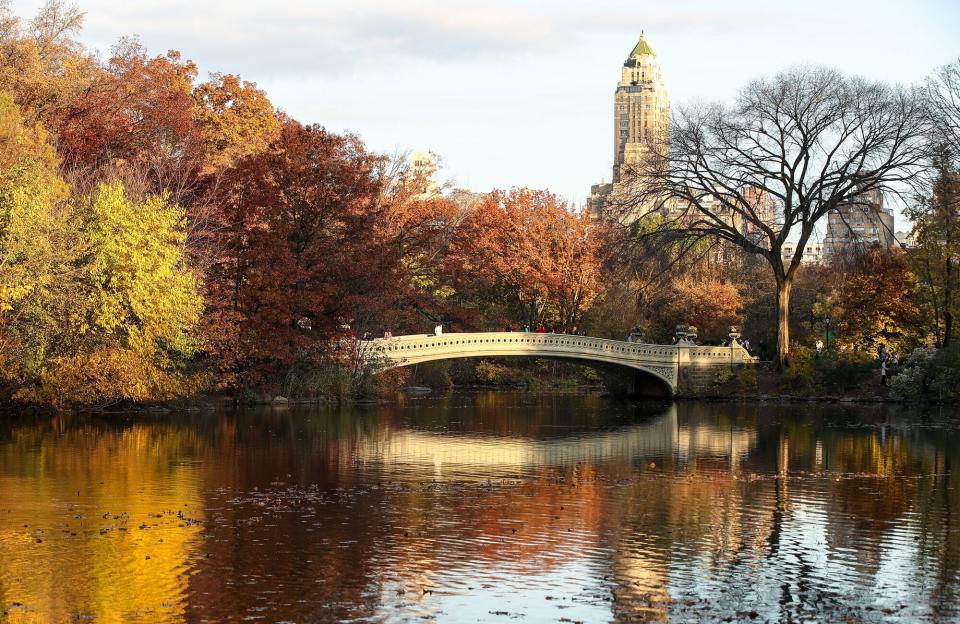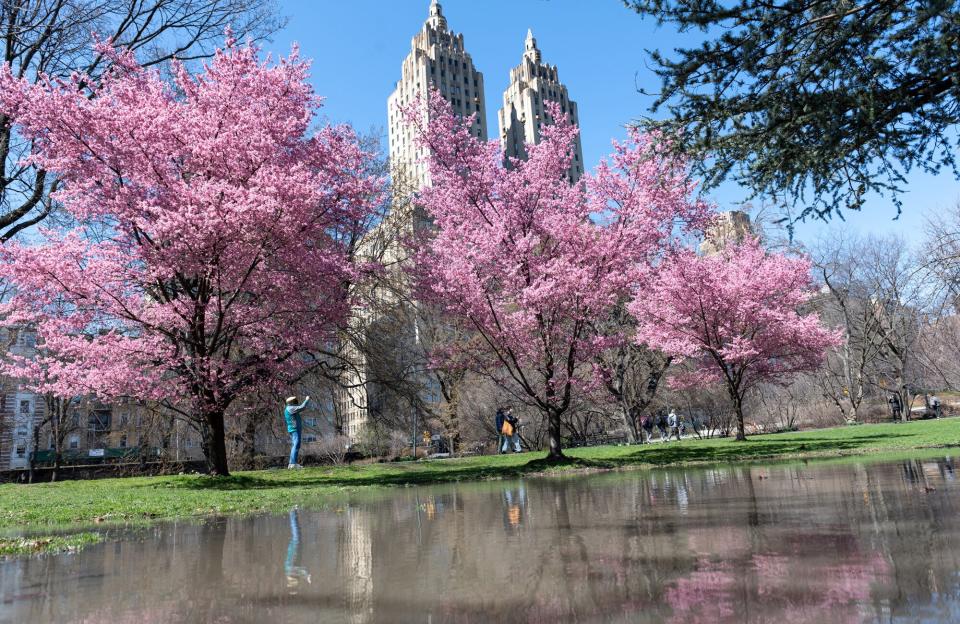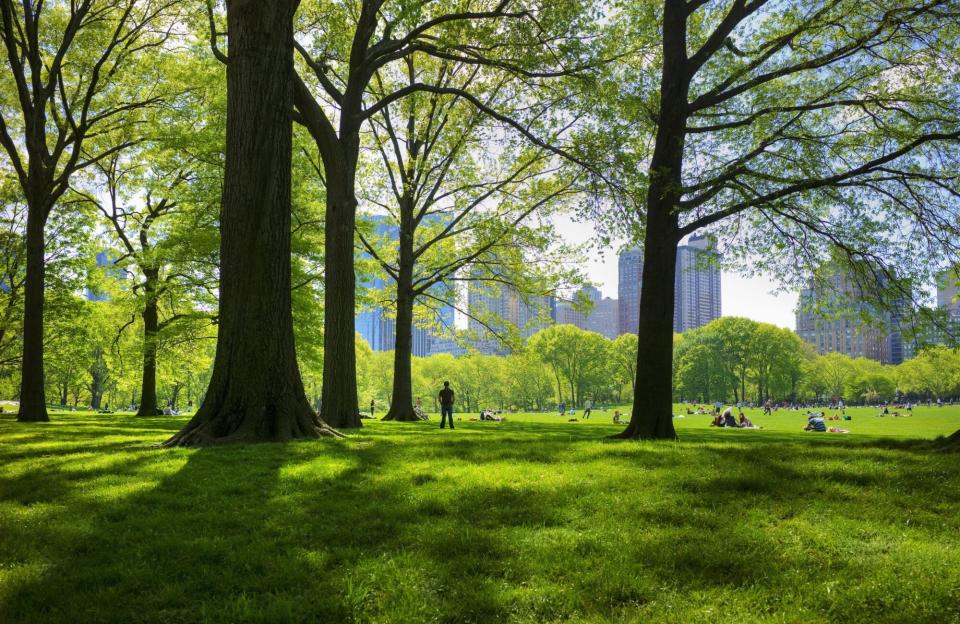Celebrate 163 Years of Trees in Central Park With These Expert Leaf-peeping Tips
- Oops!Something went wrong.Please try again later.
- Oops!Something went wrong.Please try again later.
As New York City transitions into autumn, Central Park has begun putting on the season's most fantastic show — as it has every year for the past 163 years.
On Oct. 17, 1858, landscapers carried the first trees into the 843-acre plot of land that would become Central Park. Architects Frederick Law Olmsted and Calvert Vaux had intended for the park to provide an escape for New York residents with sweeping lawns, winding paths, and mystical woodlands. And trees were an integral part of creating these now-world-famous landscapes.

Tayfun Coskun/Anadolu Agency via Getty Images
Over the past 163 years, Central Park's trees have grown to a population of more than 20,000 — although their story isn't as straightforward as you might suspect.

Alexi Rosenfeld/Getty Images
Currently, approximately 171 different species of trees can be found throughout the park. They range from Australian Pines to Yoshino Cherry Blossoms (a gift from Japan), with many others specifically chosen to create different ambiances throughout the park. For example, The Mall is lined with rows of American Elm trees, which Olmsted and Vaux intended to create "an open-air hall of reception." And the oak and sycamore trees of The Ramble create the feeling of a "wild garden" in the middle of the park.
But Olmsted and Vaux's original plan isn't exactly what you'll find when you walk through the park today. In the mid-20th century, Central Park went almost completely neglected and nature in the park was left to its own devices.
"People assume these trees were planted deliberately but in many cases that's not true," Peter Haupt, tree care manager at the Central Park Conservancy, told Travel + Leisure. "Now, the park is intensely maintained but it went through long periods of neglect in the 1950s and 1960s. During that time, trees naturally seeded in and became fairly nice specimens."
Visitors can see these rogue trees in the wooded areas like the North Woods and the Hallett Nature Sanctuary — which are also some of the best places to see fall foliage as the seasons change.
Haupt recommended checking out the park's wild places — like The Ramble, the North Woods and Hallett Nature Reserve — for the best chance to see colorful leaves. But if those sections are crowded with other visitors around this time of year, Haupt recommends checking out the trees near The Pool on 100th Street. (It gets a bit less foot traffic and you can see the vibrant colors of maple and tupelo trees.)
But Central Park's trees do much, much more than paint the city in vibrant colors each autumn. They also act as a sort of air conditioner for the city, particularly in the summer months. Tree-lined streets can feel up to 10 degrees cooler than those without, due to the shade and water vapor that trees provide through their leaves. And, of course, trees perform the unparalleled task of keeping New York City's residents (relatively) sane. Scientists have found that spending time around trees improves people's mood, health, and overall wellbeing — which is why there are few better cures for a bad day than a walk in the park.
But creating the feeling of nature in the middle of one of the world's busiest cities is a difficult project. In order to prosper in an urban environment, trees must overcome many challenges. "The typical street tree has an average growing space of a four-by-four foot square, if you're lucky," Haupt said. "All trees in urban areas are growing in limited soil volume. And they're up against conditions like poor drainage, soil quality, extreme heat, vehicles exhaust and compacted soil from foot traffic."

Tetra Images/Getty Images
The Elm trees that create the "open-air hall of reception" in The Mall, for example, are not the trees that were originally planted there 163 years ago. They are the third plantings.
"That shows how difficult it is to get trees to establish when they're planted in an urban environment," Haupt said.
To keep the park's trees healthy, Haupt said, "There's a lot that people can do to help out," when visiting.
Signs encouraging visitors to stay on walking paths are not there to keep people out of adventure or fun, but instead, eliminate any foot traffic over the trees' critical root area (which extends anywhere from 15 to 20 feet out from the trunk). Visitors should also remember to take out everything they bring in and avoid littering.
And those who especially love the trees can even join the Central Park Conservancy's Tree Trust and endow their own tree, ensuring that they'll still be around for New Yorkers to enjoy in another 163 years.
Cailey Rizzo is a contributing writer for Travel + Leisure, currently based in Brooklyn. You can find her on Twitter, Instagram, or at caileyrizzo.com.

